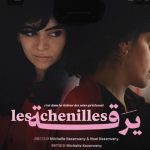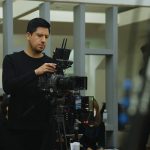The sixth edition of SICFF shared its floor with child animation coach and stop motion artist, Diaa Malaeb, from Lebanon, who has formerly worked with Save the Children.
 The sixth edition of SICFF shared its floor with child animation coach and stop motion artist, Diaa Malaeb, from Lebanon, who has formerly worked with Save the Children, and now dedicates his time to take his skills to teach refugee children stop motion animation techniques in Yemen, Tunis, Uganda, Iraq, Lebanon, and several other countries. Malaeb has assisted these children with the creation of short animations that sheds light on a social issue that stems from the hardship and uncertainty these young children are surrounded by.
The sixth edition of SICFF shared its floor with child animation coach and stop motion artist, Diaa Malaeb, from Lebanon, who has formerly worked with Save the Children, and now dedicates his time to take his skills to teach refugee children stop motion animation techniques in Yemen, Tunis, Uganda, Iraq, Lebanon, and several other countries. Malaeb has assisted these children with the creation of short animations that sheds light on a social issue that stems from the hardship and uncertainty these young children are surrounded by.
One of these clips, titled, Selling Scraps and Scavenges opened the discussions on October 17, at a panel discussion titled ‘Film Industry and Refugees, and is based on a pressing social problem that portrays Palestinian refugee children in a camp in Lebanon who drop out of school to collect and sell scraps and scavenges.
Malaeb uses the technique of stop motion to teach children essential skills. My aim through teaching stop motion techniques isnt to produce quality films but to empower them with a medium of expression, increase their literacy as most of these children are illiterate or school drop outs.
Even if the quality is not what we are used to seeing on TV, it is a big achievement because these are made by children who are mostly illiterate and do not even know how to draw. Yes, that is true; will it ever cross our minds that us or our children wouldnt know how to sketch basic shapes and forms on a piece of paper? It is for this reason that teaching these children essential skills makes a big difference to their lives.
Upon being asked how much time a film typically takes to complete with children, especially when most of them are dealing with something very technical for the first time, Diaa responded: The first few films took a lot of time as I was new to the process, but I can manage to finish most of them within five days now. First, children write out their stories and that takes time as they are trying to articulate their very difficult reality, a lot of which they dont understand. Turning the script to scenario, character drawing, scene division and bringing these characters into motion come next.
The next question, why did you choose refugee films above all, or working with refugee children above all, was addressed with the following comments by Malaeb: I know the difficulties that face these children, and want to help them by giving them a source of joy and learning through which they can effectively express themselves, and also have fun.
Also, I enjoy bringing these children in a collaborative setup where they can communicate and create together. I like how creatively children can imagine simple scenarios a walk back from school what does the street look like? Are there trees? Are there animals? This makes them visualise how they want to draw the scene, colour it and bring it to life. The first time they hear their voice-over on an animated character, they are absolutely exhilarated. And for me, its very rewarding to see that.
Throughout the festival, over a dozen movies highlighting pressing refugee issues and experiences have been screened.
















































































